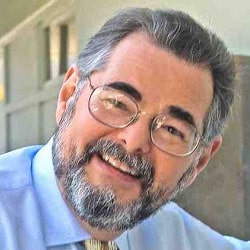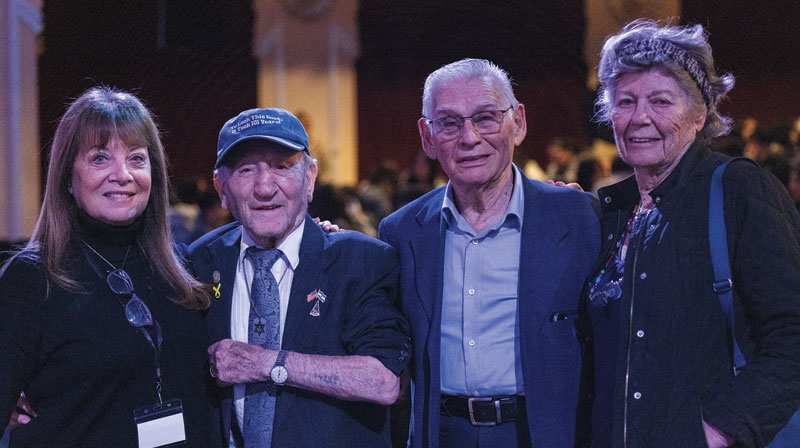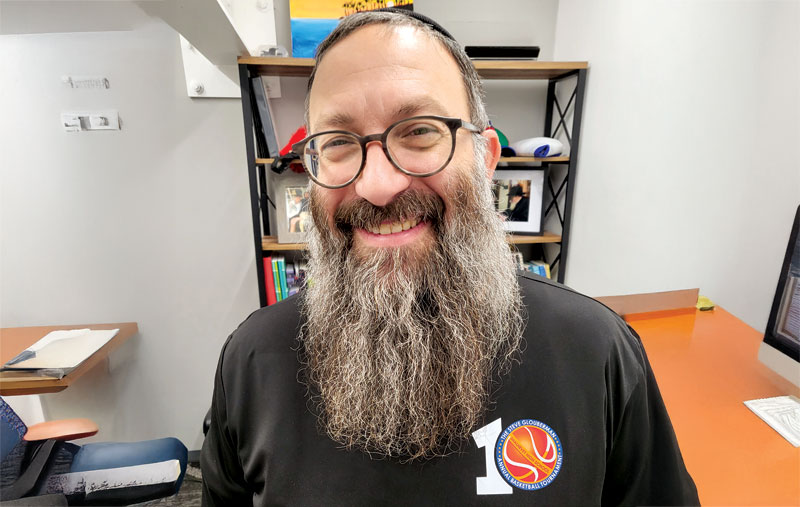Thanks to Barbara Isenberg and her effervescent and entertaining new book, “Tradition! The Highly Improbable, Ultimately Triumphant Broadway-to-Hollywood Story of Fiddler on the Roof, the World’s Most Beloved Musical” (St. Martin’s Press), the soundtrack to “Fiddler” is back on Spotify in my office.
Isenberg’s affectionate tribute to “Fiddler” joins last year’s “Wonder of Wonders,” by Alisa Solomon, a cultural history that was awarded the Jewish Journal Book Prize. Both of these books will please fans of “Fiddler,” although in different ways.
Isenberg, who has reported and written expertly on the arts, architecture and the theater, now retells the remarkable saga of how a few beloved stories by Sholem Aleichem transcended his original audience of Yiddish readers and reached the exalted status of a global cultural icon. With her eye for detail and her exhaustive original research, Isenberg shows us how the making of “Fiddler” was, at moments, as thrilling as the experience of watching it on the live stage. Indeed, I suspect that you will never see the show in quite the same way after reading “Tradition!”
For example, she shows us the tool marks of librettist Joseph Stein, lyricist Sheldon Harnick, composer Jerry Bock and director and choreographer Jerome Robbins, who created the show — which opened on Broadway in 1964 — out of the raw material of Aleichem’s stories. “The playwright found that little of Aleichem’s dialogue was usable,” she explains, “and he also had to beef up his central character of Tevye as the ‘moving force’ in the plot.”
Bock concedes that the music he composed for the American stage was “unashamedly sentimental.” When Harnick played “Sunrise, Sunset” for his sister, she was reduced to tears — the first of countless millions who have watched the various performances of the musical and the movie.
And Isenberg shares lots of interesting trivia about the show, such as “Ten Songs That Weren’t Used in the Final Show,” including one called “Dear Sweet Sewing Machine,” and the fact that Bette Midler made her Broadway debut as an understudy for the role of Tzeitel in 1966.
Isenberg credits Robbins with changing the script of “Fiddler” from “a simple folk tale,” as the musical’s eminent producer Harold Prince called it, into “an American classic.” Robbins fretted that the production, if reduced to a story “about this dairyman who has five daughters,” would end up as “the forerunner of ‘The Goldbergs.’ ” When pressed to summarize the core meaning of “Fiddler,” Harnick said: “It’s about tradition.” Robbins replied: “That’s it. Write that.”
The rest, as they say, is history: “That opening number accounts for the show crossing ethnic and religious lines and becoming a huge success,” Prince said.
We are allowed to see some of the forgotten history of the original Broadway production. Among the actors scheduled to audition for the role of Tevye were Rod Steiger, Eli Wallach and Tom Bosley, which suggests how differently the story of “Fiddler” might have turned out. But the fateful choice was Zero Mostel, a survivor of the Hollywood Blacklist. Prince takes the credit for it: “I shoved Zero down their throats,” he said. “Maybe I am exaggerating, but I know Zero wasn’t anyone’s first choice but mine.”
Even the show’s title was a crucial act of invention. “Not So Long Ago, Not So Far Away” was one contender; “Where Poppa Came From” was another. But when Robbins saw the set designs of Boris Aronson, with their explicitly Chagall-esque motifs, he declared: “I’m going to make it like Chagall. In fact, I think I’ll call it ‘Fiddler on the Roof.’ ” And yet, characteristically and to her credit, Isenberg points out that other participants in the show credit Prince for making the final choice: “That’s the one,” he said when presented with the list of prospective titles.
Of course, acts of vision and invention prevailed from beginning to end of the Broadway staging of “Fiddler.” Memorably, the show began on a rotating circular stage where the audience met the denizens of Anatevka to the tune of “Tradition” and concluded on the same stage from which they step to seek refuge in various far-flung places. “It was,” according to journalist Frank Rich, “one of the most moving final curtains of the American musical theater.”
And yet, during out-of-town tryouts, no one predicted that the show would be a hit, much less the enduring classic that it turned out to be. According to one of Isenberg’s sources, one of the children in the cast eavesdropped in the lobby during intermission. “The word on the street from the child actor mafia was thumbs-down,” according to Austin Pendleton, a member of the original cast. “They said, ‘It’s no “Sound of Music.” ’ ”
For those who find fault with the universalizing of “Fiddler,” the show is not wholly endearing, a fact that Isenberg readily acknowledges. Philip Roth dismissed “Fiddler” as “shtetl kitsch.” Cynthia Ozick described its book and lyrics as “emptied out, prettified romantic vulgarization.” More recently, according to Isenberg, the distinguished critic Ruth Franklin found one recent production of “Fiddler” to be “cartoonish, condescending and ‘pure Broadway.’ ”
But, then, the whole point of “Tradition!” is to show us that “Fiddler” is an artifact of American popular culture and, for that reason, we should not be surprised to discover that it comes with a heavy dose of kitsch. As if by way of example, Isenberg shares an anecdote about the Broadway opening, which was attended by Aleichem’s daughter and granddaughter. “That’s not Papa,” complained the great man’s daughter to her own daughter, Bel Kaufman, who responded: “Mama, that’s not Papa, but it’s a beautiful American musical play.”
To put it another way, “Fiddler” is not “Tevye and His Daughters,” and the transformation of Aleichem’s stories was not merely a matter of translating them from Yiddish to English. Rather, it was an act of invention by a team of savvy show-makers. In showing us how a Broadway hit is actually made, we see the arguments, the compromises, the failed experiments and the occasional acts of authentic genius that are now enshrined on stage and screen in a far more enduring way than the Yiddish stories that inspired
“Fiddler.”























 More news and opinions than at a Shabbat dinner, right in your inbox.
More news and opinions than at a Shabbat dinner, right in your inbox.